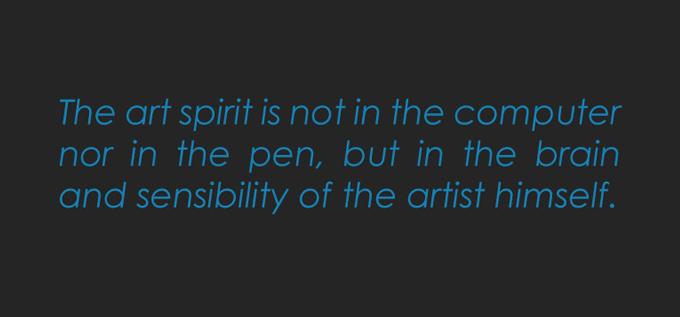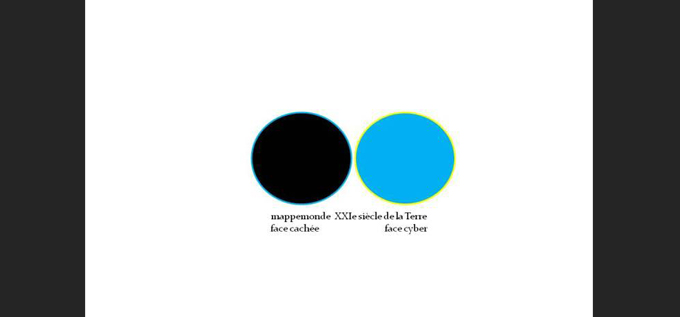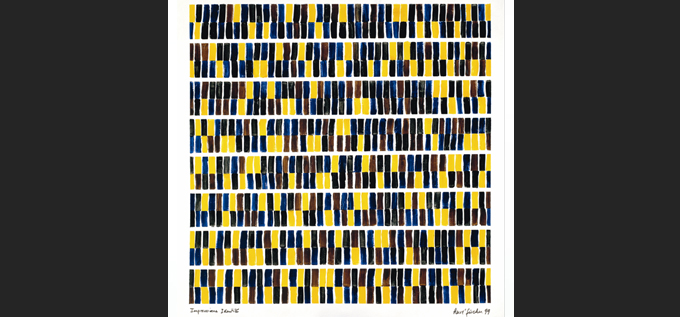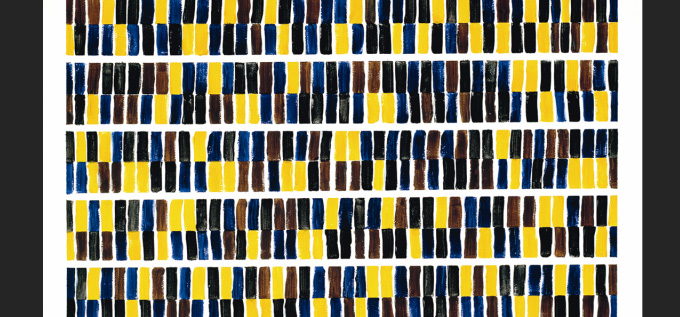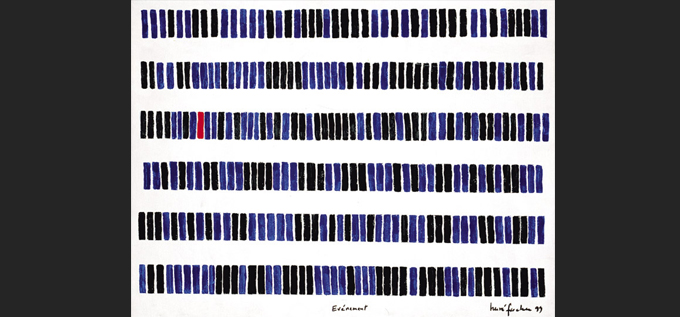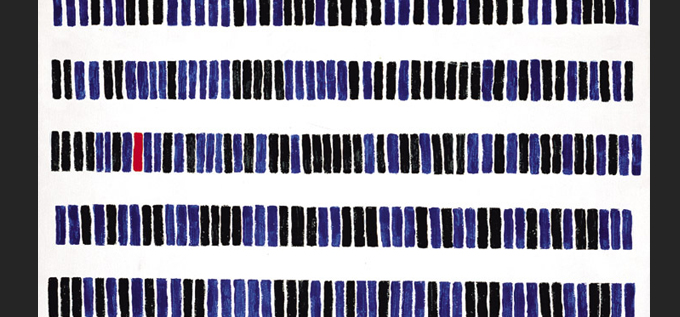Hervé Fischer
TWEET ART, in French TUITART, is an actualization on the web of the former postal art and the New York Correspondence School of Ray Johnson, of rubberstamp art, wall’s graffiti and posters, street’s imaginary signalizations, pills of the Fischer Pharmacy, tags, tattoos, etc. Futurist artists would have enjoyed Twitter‘s immediate power to diffuse images on Internet and social media. These meaningful small images, instead of the 140 characters allowed by Twitter, are exploring the topic of philosophical and ethical questioning about today’s art, politics and main social issues. Barcodes, binary codes, codes with 4 letters (acgt) of DNA, financial diagrams are the main icons of the digital age which l explore. A new step in sociological art, with its interrogative aesthetics.
Tweet art is also a way to link again fine arts and digital arts. I work with painting and computing simultaneously. I don’t agree with the binary way of thinking of artists of the fine arts against the digital arts or reciprocally. They have developed an attitude of anathema between themselves. They should admit that there is no progress in art history. A computer piece of art is not more valuable than a painting on canvas because it is digital. Technological progress is not an issue for art, even if art is always linked with technologies. The art spirit is not in the computer nor in the pen, but in the brain and sensibility of the artist himself. Therefore l look myself for what l call “digital fine arts”.
BIOGRAPHY:
Artist-philosopher, creator of "sociological art" (1971), Hervé Fischer was invited at the Venice Biennial in 1976, a special guest at the Sao Paulo Biennial in 1981 and participated at Documenta 7 in Kassel (Germany) in 1982. He had personal exhibitions at the Musée Galliéra (Paris) in 1976, at the Museum of Contemporary Art in Montreal in 1980, and Mexico in 1983. In 1985, he organized Franco-Canadian participation in the Marco Polo electronic novel project which involved writers from Africa, Europe and Canada. Since 1999, he is working again as a painter of the digital age. He had one man shows at the Museo Nacional de Bellas Artes in Buenos Aires, Argentine, (2003), Museo Nacional de Artes Visuales, Montevideo, Uruguay (2004), Museo Nacional de Bellas Artes de Chile, Santiago (2006), MNBA de Neuquen (2009), Centro Wilfredo Lam de La Havana (2009), and a retrospective at the MOMO of Céret, France (2010). He has published many books.
